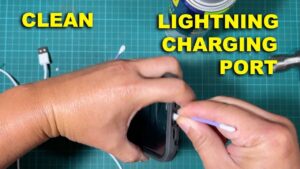Having trouble with your Android charger? Frustrating, isn’t it? Worry not, because in this blog post, we’ll show you how to fix your Android charger in a few simple steps. No need for technical expertise or expensive repairs. Whether your charger is not working at all or charging too slowly, we’ve got you covered. So, if you’re tired of searching for solutions online, look no further! Just follow our guide and soon enough, you’ll be back to charging your Android device hassle-free. Ready to learn how to fix your Android charger? Let’s dive in!
How to Fix Android Charger
Introduction
Android devices have become an integral part of our lives, and a working charger is essential to keep them powered up. However, sometimes we encounter issues with our Android chargers, such as slow charging, not charging at all, or loose connections. In this comprehensive guide, we will explore various troubleshooting methods and solutions to fix common Android charger problems. Whether you are using a USB cable, wall adapter, or wireless charger, we’ve got you covered.
Table of Contents
- Check the Charger and Cable
- Clean the Charging Port
- Restart Your Android Device
- Update Your Android Software
- Enable USB Debugging
- Reset Your Android Device
- Try a Different Power Source
- Use a Different Charger
- Consider Wireless Charging
- Conclusion
1. Check the Charger and Cable
The first step in troubleshooting an Android charger issue is to inspect the charger and cable for any visible damage. Here’s what you can do:
- Examine the charger and cable for frayed wires, bent pins, or loose connections. If you notice any damage, it’s time to replace them.
- Try using the charger and cable with another Android device to determine if the problem lies with the charger or your device. If it works fine with another device, then the issue may be specific to your Android device.
- Make sure you are using the original charger and cable that came with your Android device. Using third-party chargers and cables may not provide optimal charging performance.
2. Clean the Charging Port
A common cause of charging issues is a dirty or obstructed charging port. Over time, lint, debris, or dust can accumulate in the charging port, preventing a proper connection. Here’s how you can clean the charging port:
- Power off your Android device.
- Inspect the charging port for any visible debris. If you can see any, use a small, non-metallic object (like a toothpick or a plastic toothbrush) to gently remove it.
- Blow into the charging port to remove any loose debris.
- Alternatively, you can use compressed air to blow out any stubborn debris.
- Once the charging port is clean, wait a few minutes for any moisture to evaporate before attempting to charge your device.
3. Restart Your Android Device
Sometimes, simple software glitches can interfere with the charging process. Restarting your Android device can help resolve these issues. Here’s how you can do it:
- Press and hold the power button until you see the power options menu on your screen.
- Select the “Restart” or “Reboot” option from the menu.
- Wait for your device to power off and then turn it back on.
- Try charging your device again after the restart is complete.
4. Update Your Android Software
Outdated software can sometimes cause charging problems on Android devices. Updating to the latest software version can fix any software-related issues. Here’s how you can check for software updates:
- Go to your device’s “Settings” menu.
- Scroll down and tap on “System” or “Software Updates.”
- Tap on “Check for Updates” and follow the on-screen instructions to download and install any available updates.
- Once the update is complete, try charging your device again.
5. Enable USB Debugging
Enabling USB debugging mode on your Android device can sometimes resolve charging issues related to USB connectivity. Here’s how you can enable USB debugging:
- Go to your device’s “Settings” menu.
- Scroll down and tap on “About Phone” or “About Device.”
- Locate the “Build Number” and tap on it repeatedly (usually around 7 times) until you see a message confirming that you are now a developer.
- Go back to the main settings menu and scroll down to find “Developer Options.”
- Tap on “Developer Options” and enable “USB Debugging.”
- Try charging your device again while in USB debugging mode.
6. Reset Your Android Device
If all else fails, performing a factory reset on your Android device can help resolve stubborn charging issues. However, keep in mind that a factory reset will erase all data on your device, so make sure to back up your important files before proceeding. Here’s how you can perform a factory reset:
- Go to your device’s “Settings” menu.
- Scroll down and tap on “System” or “General Management.”
- Select “Reset” or “Backup and Reset.”
- Tap on “Factory Data Reset” or “Erase All Data.”
- Follow the on-screen instructions to confirm the reset and wait for the process to complete.
- After the reset, set up your device again and check if the charging issue has been resolved.
7. Try a Different Power Source
Sometimes, the power source itself can be the culprit behind charging problems. Here’s what you can do:
- Try plugging your charger into a different power outlet or USB port to rule out any issues with the current power source.
- Avoid using power strips or extension cords, as they can sometimes cause power fluctuations that affect charging performance.
8. Use a Different Charger
If you have access to another charger, try using it to charge your Android device. This will help determine if the problem lies with your charger or the device itself.
- If the alternative charger works fine, consider replacing your original charger.
- If the alternative charger also fails to charge your device, the issue may be with your Android device. In this case, it’s recommended to seek professional assistance or contact the manufacturer for further support.
9. Consider Wireless Charging
If you’re still facing charging problems with your Android device, you might want to consider wireless charging as an alternative. Wireless chargers eliminate the need for a physical connection and can provide a convenient and reliable charging solution.
- Check if your Android device supports wireless charging. If it does, you can purchase a compatible wireless charger.
- Place your Android device on the wireless charger and ensure it is properly aligned for charging.
- Wireless charging pads typically have an LED indicator to confirm that the device is charging.
Dealing with a malfunctioning Android charger can be frustrating, but with the troubleshooting methods mentioned in this guide, you can fix most common charging issues. Remember to check the charger and cable, clean the charging port, and try different power sources or chargers. If all else fails, consider reaching out to a professional or the manufacturer for further assistance. With a functioning charger, you’ll never have to worry about your Android device running out of power when you need it the most.
How to fix loose phone charger cable | Easy and effective method
Frequently Asked Questions
Why is my Android charger not working?
There can be several reasons why your Android charger is not working. It could be due to a faulty cable or adapter, a problem with the charging port on your device, or even a software issue. To fix this, you can try a few troubleshooting steps.
What should I do if my Android charger is not charging my device?
If your Android charger is not charging your device, first ensure that the charging port is clean and free from debris. You can use a small brush or compressed air to clean it. Also, try using a different charging cable and adapter to rule out any issues with those components. If the problem persists, you may need to contact the manufacturer or visit a professional repair service.
Why is my Android charger cable frayed or damaged?
Android charger cables can become frayed or damaged over time due to regular wear and tear. Pulling the cable out forcefully from the device or adapter, bending it at sharp angles, or frequently twisting it can contribute to cable damage. To prevent this, try to handle the cable with care and avoid putting stress on it during use.
How can I fix a loose connection between my Android charger and device?
If you have a loose connection between your Android charger and device, it may not charge properly. One solution is to check for debris in the charging port and clean it carefully. If that doesn’t solve the issue, you can try using a different charging cable or adapter to see if the problem lies with either of those components. If the loose connection persists, it might be necessary to visit a professional for further assistance.
What should I do if my Android charger is charging slowly?
If your Android charger is charging your device slowly, there are a few things you can try. First, make sure you are using a certified charger from a reputable manufacturer. Then, check if there are any background apps or processes running on your device that may be consuming power. Additionally, using a higher wattage charger or connecting your device directly to a power outlet instead of a computer may help to speed up the charging process.
Can I use a different charger to charge my Android device?
While it is generally safe to use a different charger to charge your Android device, it is important to use a charger that is compatible with your device’s charging requirements. Using a charger with lower wattage or incompatible voltage may result in slower charging or potential damage to the device’s battery. It is recommended to use the charger provided by the manufacturer or a certified third-party charger that is specifically designed for your Android device.
Final Thoughts
To fix an Android charger, start by checking the cable for any signs of damage, such as fraying or bent connectors. If the cable seems fine, try using a different charger or USB cable to isolate the issue. Clean the charging port on your Android device using compressed air or a toothpick to remove any dirt or debris. Restart your device and check if it charges properly. If the problem persists, consider replacing the charger or consulting a technician for further assistance. By following these simple steps, you can troubleshoot and resolve common issues with your Android charger.



